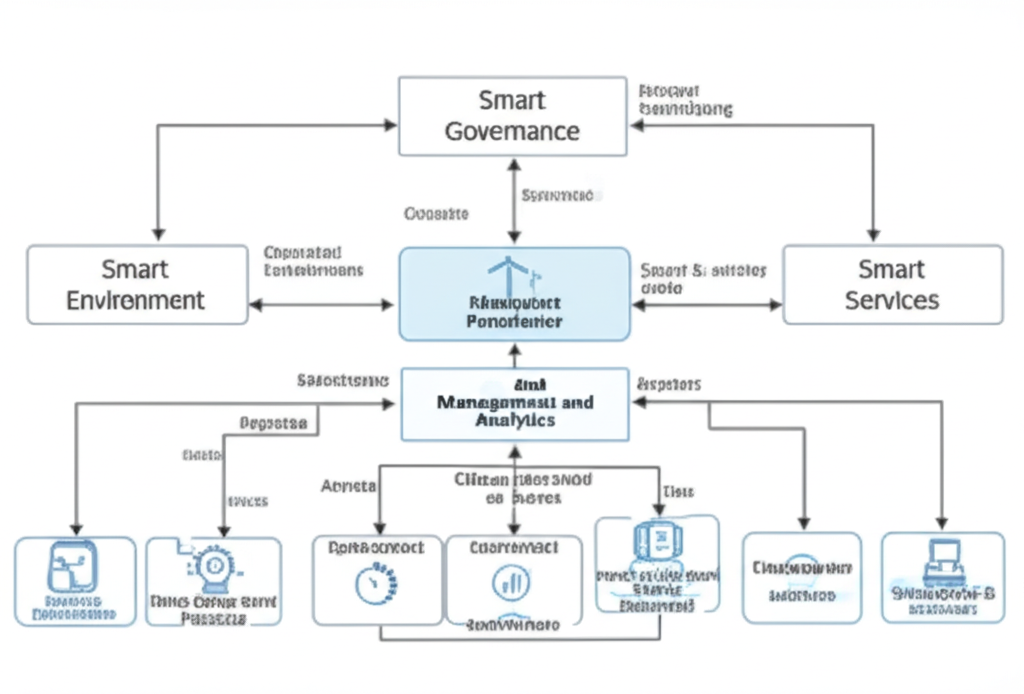Modular Architecture for Scalable Smart Cities


As cities embark on their smart city journeys, one of the biggest challenges they face is how to build systems that can grow and evolve with their needs. Modular architecture provides the answer, offering a flexible, scalable approach to smart city development that allows cities to start small and expand systematically.
Understanding Modular Architecture
Modular architecture in smart cities refers to designing systems as independent, interchangeable components that can work together seamlessly. This approach offers several key advantages:
- Scalability: Add new modules as needs grow without rebuilding existing systems
- Flexibility: Swap out or upgrade individual components without affecting the entire system
- Cost-Effectiveness: Implement solutions incrementally, spreading costs over time
- Risk Reduction: Test and validate smaller components before full-scale deployment
Core Principles of Modular Design
Successful modular smart city architectures are built on several fundamental principles:
Standardized Interfaces
All modules must communicate through standardized APIs and protocols, ensuring compatibility and interoperability. This allows different vendors' solutions to work together seamlessly.
Loose Coupling
Modules should be designed to operate independently, with minimal dependencies on other components. This ensures that problems in one module don't cascade throughout the system.
Service-Oriented Architecture
Each module provides specific services that other modules can consume, creating a marketplace of capabilities that can be combined in different ways to meet various needs.
Implementation Strategies
Cities can implement modular architectures through several approaches:
Platform-Based Approach
Start with a core platform that provides basic services like data management, user authentication, and system monitoring. Additional modules can then be built on top of this foundation.
Domain-Specific Modules
Organize modules around specific city functions such as transportation, energy, public safety, and citizen services. Each domain can evolve independently while sharing common infrastructure.
Microservices Architecture
Break down large applications into smaller, focused services that can be developed, deployed, and scaled independently. This approach is particularly effective for complex smart city applications.
Real-World Examples
Cities around the world have successfully implemented modular smart city architectures:
Barcelona's Smart City Platform
Barcelona built a modular platform that started with smart lighting and gradually expanded to include parking management, environmental monitoring, and citizen engagement tools. Each module was added based on demonstrated value and citizen needs.
Singapore's Smart Nation Initiative
Singapore's approach focuses on creating reusable modules that can be applied across different government agencies. Their urban sensing platform, for example, provides data services that multiple agencies can use for their specific applications.
Amsterdam's Circular City Platform
Amsterdam developed a modular platform for managing circular economy initiatives, with separate modules for waste management, energy optimization, and resource tracking that can be combined in different ways.
Benefits and Challenges
While modular architecture offers significant benefits, it also presents some challenges:
Benefits:
- Faster time to market for new capabilities
- Easier maintenance and updates
- Better vendor diversity and competition
- Improved system resilience
Challenges:
- Initial complexity in designing interfaces
- Need for strong governance and standards
- Potential performance overhead from modularity
- Requirement for skilled technical teams
Best Practices for Implementation
Cities looking to implement modular architectures should follow these best practices:
- Start with a clear vision: Define long-term goals while planning for incremental implementation
- Invest in standards: Establish clear technical standards and governance processes early
- Focus on interoperability: Ensure all modules can communicate effectively with each other
- Plan for evolution: Design systems that can adapt to changing needs and technologies
- Engage stakeholders: Include end users and city departments in the design process
Future Trends
The future of modular smart city architecture will be influenced by several emerging trends:
- Edge Computing: Pushing processing closer to data sources for better performance
- AI Integration: Embedding artificial intelligence capabilities into individual modules
- Blockchain: Using distributed ledger technology for secure inter-module transactions
- Digital Twins: Creating virtual representations of city systems for better planning and optimization
As cities continue to evolve and face new challenges, modular architecture will become increasingly important for building resilient, adaptable smart city systems that can grow and change with urban needs.
Ready to Transform Your City?
Discover how SentientCity.AI can help your city implement the smart solutions discussed in this article.